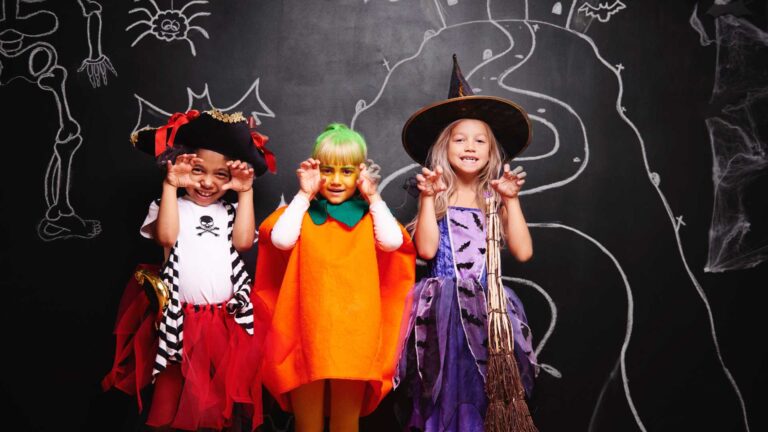Table of Contents
What are the Signs of Masking in Autism?
When people think of autism, they often imagine visible signs of differences in communication, repetitive behaviors, or unique social styles. Yet for many individuals on the spectrum, these traits are not always apparent to the outside world. Some children, teens, and even adults with autism learn to “mask” their natural behaviors to fit in. This phenomenon, known as masking in autism, is complex, deeply emotional, and often misunderstood.
Masking might help someone blend in socially or avoid judgment, but it can also come at a tremendous emotional cost. It can cause exhaustion, anxiety, and even delay diagnosis or access to much-needed support. For parents, caregivers, and educators, recognizing masking is essential because what looks like “progress” on the surface may actually be a sign of struggle beneath.
In this blog by ABA Centers of Georgia, we’ll explore what masking in autism is, why it happens, and what signs to look for. We will also discuss how it affects mental and emotional well-being, and how compassionate approaches like Applied Behavior Analysis (ABA) therapy can help individuals navigate social expectations without losing their authenticity.
What Is Masking in Autism?
Masking in autism (also known as autism camouflaging or autistic masking) refers to the conscious or unconscious effort to hide or suppress behaviors typically associated with autism. This masking can include avoiding stimming (self-soothing movements like hand-flapping or rocking), forcing eye contact, mimicking facial expressions, rehearsing conversations, or following social “scripts.”
In essence, it’s an attempt to appear more “neurotypical” to blend in, to be accepted, or to avoid misunderstanding and stigma. While this may help someone adapt temporarily, it often comes with emotional exhaustion and a loss of self-identity.
According to Frontiers in Psychiatry, autistic masking is particularly common among girls and women with autism, which contributes to delayed diagnosis. Girls are often more socially motivated and learn to imitate peers, making their autism less visible to teachers, doctors, and even family members. However, masking occurs across genders and age groups, especially in environments where fitting in feels necessary for safety or belonging.

Why Do People with Autism Mask?
The reasons for autistic masking vary, but they’re often rooted in social pressure and survival instincts. Many individuals with ASD report starting to mask at an early age, sometimes as young as preschool, because they notice they are “different.”
Here are some common motivations behind masking:
- Social Acceptance: Children may mask to avoid bullying, rejection, or being seen as “weird.” Adults may do it to maintain jobs or relationships.
- Safety and Avoidance of Negative Reactions: Some people with autism have experienced punishment or ridicule for natural behaviors like stimming or avoiding eye contact.
- Desire to Belong: The human need for connection is universal. Autism camouflaging can be a way to fit into peer groups or family systems that don’t fully understand neurodiversity.
- External Expectations: Schools, workplaces, and even therapy settings sometimes unintentionally reinforce the idea that “passing” as neurotypical equals success.
- Learned Adaptation: Over time, masking becomes habitual. It’s not always a conscious choice; it can feel automatic and exhausting.
While autism camouflaging can serve a protective function, it can also obscure a person’s actual needs and lead to burnout.
Signs of Masking in Autism
Because masking is a form of social adaptation, it’s not always apparent, especially to those who aren’t familiar with autism. Parents, teachers, or clinicians might misinterpret these behaviors as confidence or improvement.
Common signs include:
- Excessive mimicry: The person imitates speech patterns, gestures, or expressions of others.
- Scripted conversation: They rely on memorized phrases or dialogue to navigate social situations.
- Forced eye contact: Maintaining eye contact even when uncomfortable.
- Suppressed stimming: Avoiding natural movements or fidgeting in public but doing them privately.
- Over-preparation for interactions: Practicing conversations or responses ahead of time.
- Exhaustion after social events: The child or teen may come home irritable, tired, or withdrawn after socializing.
- Inconsistent behavior: Appearing highly social at school but withdrawn at home.
- Anxiety and perfectionism: Fear of making mistakes or saying the “wrong” thing socially.
Parents may notice that their child “acts differently” around certain people, more talkative, quieter, overly polite, or more rigid. This difference between public and private behavior can be a key indicator of masking.
The Emotional Toll of Masking
While masking can help individuals with autism avoid immediate negative attention, the long-term effects are severe. Studies have shown that frequent masking correlates with anxiety, depression, low self-esteem, and autistic burnout, a state of extreme exhaustion and emotional depletion.
When someone constantly hides their natural self, it sends a painful message: “Who I really am isn’t acceptable.” Over time, this can lead to:
- Identity confusion: Difficulty distinguishing between one’s authentic self and one’s “mask.”
- Social exhaustion: Feeling drained after trying to maintain social performance.
- Mental health challenges: Elevated risk for anxiety, depression, and trauma-related symptoms.
- Delayed diagnosis: Especially in girls and teens, masking can hide the accurate indicators of autism, preventing early support.
A study by Autism in Adulthood found that individuals who mask extensively often experience “autistic burnout,” marked by fatigue, reduced functioning, and emotional collapse. This adverse effect shows why it’s vital for caregivers and professionals to recognize and validate the struggles behind “good behavior.”
How ABA Therapy Can Help Without Forcing Change
At ABA Centers of Georgia, we understand that every child’s experience with autism is unique. Our approach to ABA therapy focuses on empowerment, not conformity. The goal is never to make someone “less autistic,” it’s to help them communicate, cope, and thrive authentically.
Here’s how ABA can help individuals who engage in masking:
Enhancing Communication Skills
ABA helps children express their needs more effectively through verbal or alternative communication, reducing the need to “mask” distress.
Building Self-Advocacy
Therapists teach children how to ask for breaks, set boundaries, and communicate discomfort, promoting autonomy and confidence.
Encouraging Emotional Regulation
ABA techniques can reduce anxiety and frustration through coping strategies like deep breathing, sensory breaks, and structured routines.
Creating Safe Learning Environments
Sessions are designed to make children feel seen, understood, and accepted — so they can drop their mask and just be themselves.
Collaborating with Families
Parent training ensures that caregivers know how to support authenticity at home and recognize when a child is masking stress.
The emphasis is always on celebrating individuality. ABA therapy at our centers is not about teaching children to hide who they are, but about helping them navigate a world that sometimes struggles to understand them.
Supporting Children at Every Step of the Way
Masking in autism is a profound human response to social expectations, a way of surviving in a world that doesn’t always celebrate neurodiversity. But no child should feel that they must hide who they are to be accepted. With awareness, empathy, and proper therapeutic support, we can help children and teens on the spectrum express themselves openly and confidently.
At ABA Centers of Georgia, our mission is to empower every child to thrive as their authentic self. Through personalized ABA therapy programs, offered in-home, in-center, and at school, we help families understand autism from a place of compassion and acceptance, not correction.
If you’re ready to take the next step, contact us at (855) 929-5058 or schedule a consultation with us today!










